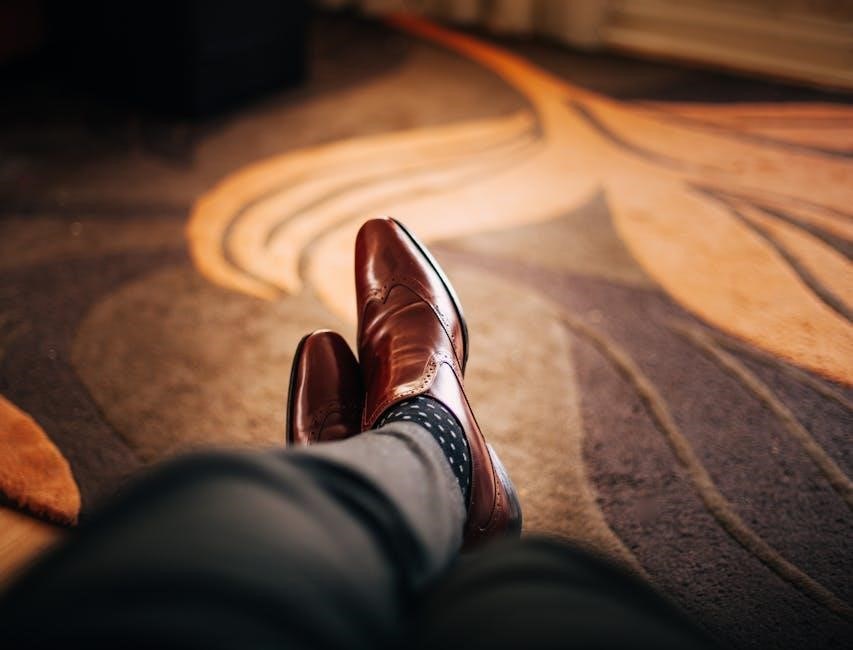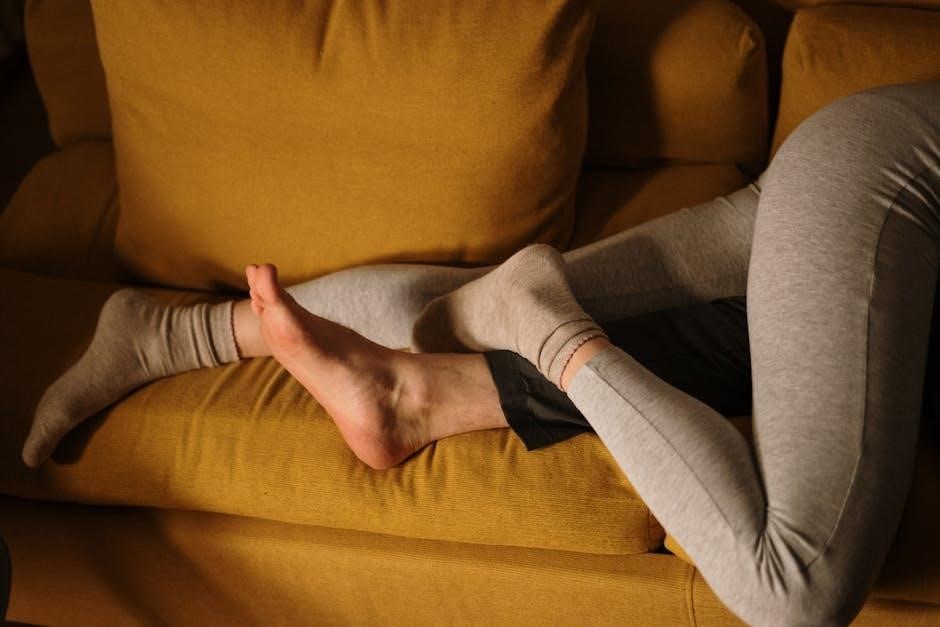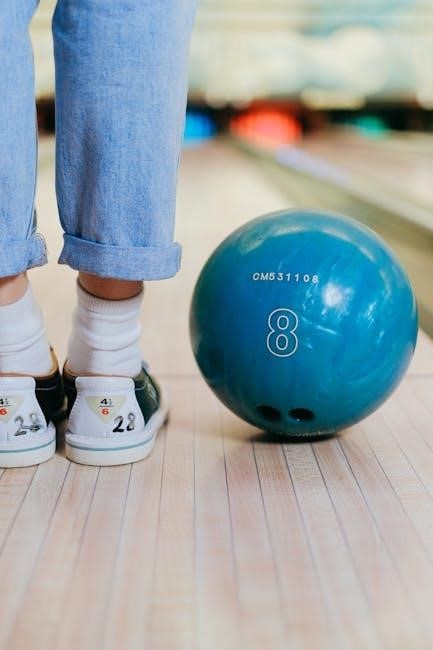Discover the ultimate guide to finding your perfect sock size. Learn how shoe size, fabric, and height impact fit. Ensure comfort and style with our expert tips.
1.1 Why Sock Size Matters
Proper sock size is essential for comfort, health, and performance. Ill-fitting socks can cause discomfort, blisters, or restricted blood flow, while the right size ensures optimal support and mobility. Sock size impacts how fabrics interact with your skin, affecting breathability and moisture management. Whether for casual wear, sports, or specialized needs like compression socks, the correct fit prevents issues like slipping, bunching, or tightness. Incorrect sizing can also reduce the durability of socks, leading to premature wear. By understanding the importance of sock size, you can enhance your daily comfort and ensure your socks meet your specific needs, from casual to high-performance activities.
1.2 How Sock Sizes Are Determined
Sock sizes are primarily determined by correlating them with shoe sizes, using standardized charts that align sock sizes with common shoe size ranges for men, women, and unisex options. Manufacturers often base their sizing on foot length and circumference measurements, ensuring a snug yet comfortable fit. Fabric type and thickness also influence size, as materials like cotton, polyester, or elastane stretch differently. Some brands offer activity-specific sizing, such as compression socks, which focus on tightness levels for medical or performance needs. Ultimately, sock sizes aim to provide a consistent fit across various styles and activities, ensuring comfort and durability. This approach helps consumers find the perfect pair based on their shoe size and personal preferences.

Understanding Sock Size Charts
Sock size charts categorize sizes by shoe size ranges for men, women, and unisex options, ensuring a precise fit based on foot length and circumference measurements.
2.1 Standard Sock Size Ranges for Men and Women

Standard sock sizes for men and women are typically aligned with shoe sizes, ensuring a consistent fit. Men’s sizes range from Small to X-Large, corresponding to shoe sizes 6-12, while women’s sizes cover 4-10. These ranges account for variations in foot length and circumference, providing a universal fit. Unisex options also exist, offering flexibility for shared sizing needs. By referring to these standardized charts, individuals can easily determine their ideal sock size based on their shoe size, ensuring comfort and a proper fit for various activities and preferences.
2.2 Unisex Sock Size Options

Unisex sock sizes offer versatility, catering to a wide range of preferences and needs. These sizes are designed to fit both men and women, typically spanning from Small to X-Large. The size chart often includes options like XS, S, M, L, and XL, ensuring a one-size-fits-all approach. Unisex socks are ideal for shared wardrobes or gifts, as they eliminate the need for gender-specific sizing. Many brands provide unisex options in various styles, from casual to athletic, making them suitable for diverse activities. By offering a universal fit, unisex socks simplify the selection process, ensuring comfort and practicality for everyone.
2.3 Children’s Sock Size Guide
Children’s sock sizes are typically determined by age ranges, shoe sizes, and foot length. Sizes often range from infant to youth, with specific Charts catering to toddlers and older kids. For example, sizes may include 13C for toddlers up to 5Y for older children. Many brands offer activity-specific socks, such as sports or school styles, ensuring comfort during play or daily wear. Parents should consider growth spurts when selecting sizes, allowing room for expansion. Some charts recommend adding 1cm to the measured foot length for a comfortable fit. This guide helps parents choose the right size, ensuring their children’s feet stay happy and healthy throughout the day.

International Sock Size Conversions
Convert sock sizes seamlessly between US, EU, and UK systems. Use charts to match your shoe size across regions for a perfect fit every time, worldwide.
3.1 US, EU, and UK Shoe Size Equivalents
Understanding shoe size equivalents is key to buying socks online. US sizes typically range from 5 to 11 for men, while EU sizes span 35 to 46. UK sizes are slightly different, usually from 3 to 12. For women, US sizes range from 4 to 12, EU from 35 to 43, and UK from 2 to 9. These conversions help match your shoe size to the correct sock size. For example, a US men’s size 9 corresponds to EU 42 and UK 8. Always refer to charts for precise conversions to ensure the best fit.
3.2 Japan and Other Regional Size Charts
Japan uses a unique sizing system based on centimeter measurements, ranging from 23cm to 29cm for adults. These sizes align with international shoe sizes, providing a consistent fit. For example, a Japan size 25cm corresponds to a US men’s size 7 or a UK size 6. Other regions, like Europe, follow similar patterns, with sizes often overlapping between countries. Unisex options are common, ensuring versatility. When shopping internationally, refer to regional charts to match your size accurately. This approach guarantees comfort and the right fit, whether for casual or specialized socks like compression or athletic styles. Always check the specific chart for precise measurements.

Sock Fit and Comfort
Proper fit is key for comfort. Fabric thickness, elasticity, and sock height influence how they feel. Choose materials like cotton or blends for breathability and durability to ensure all-day comfort.
4.1 How Fabric and Thickness Affect Size
Fabric type and thickness play a crucial role in how socks fit. Thicker materials, like wool, can make socks feel tighter, while thinner fabrics, such as cotton blends, offer a more relaxed fit. Compression socks are designed to be snug but not restrictive, providing support without discomfort. The composition of the fabric, such as 80% cotton, 16% polyester, and 4% elastane, ensures elasticity and comfort. Additionally, fabric density affects how the sock conforms to the foot. Understanding these factors helps in selecting the right size for optimal comfort and performance, ensuring your socks feel great throughout the day.
4.2 Sock Heights and Their Impact on Fit
Sock heights significantly influence comfort and functionality. No-show socks are ideal for tight-fitting shoes, preventing visible socks. Ankle socks offer minimal coverage, suitable for casual wear. Crew socks, mid-calf, and over-the-calf styles provide increasing support and warmth. The height affects how the sock stays in place and its ability to prevent blisters. Thicker socks in taller styles often provide better cushioning, while shorter styles prioritize breathability. Choosing the right height ensures optimal fit for specific activities, enhancing both performance and comfort. Proper height selection balances aesthetics and practicality, making it a key factor in achieving the perfect sock fit.

Measuring Your Foot for the Perfect Fit
Measure your foot accurately using a ruler for the best fit. Stand while measuring to account for natural foot expansion. Add extra room for comfort.

5.1 How to Measure Foot Length Accurately
To measure your foot length accurately, stand on a flat surface and place your heel against a wall. Use a ruler to measure from the back of your heel to the tip of your longest toe. Ensure the ruler is parallel to the floor for precise results. Measure both feet, as they may differ slightly, and use the larger measurement to ensure comfort. For the best fit, consider adding a small amount of extra room to account for natural foot expansion during the day. This method ensures your socks will fit comfortably without being too tight or too loose.
5.2 Adding Extra Room for Comfort
Adding extra room to your sock size ensures all-day comfort and prevents tightness. Most experts recommend adding 1-2 centimeters to your foot length measurement to accommodate natural foot expansion. This extra space allows for a snug yet comfortable fit, especially during activities where feet tend to swell slightly. When choosing socks, consider the fabric thickness and cushioning, as thicker materials may require a bit more room. Properly fitted socks enhance circulation, reduce blisters, and provide long-lasting comfort. Always refer to the size chart for specific guidelines, as different brands may vary slightly in their recommendations for added room.

Specialized Sock Sizes
Explore specialized sock sizes, including compression socks for medical needs and activity-specific designs for sports. These tailored options ensure optimal support, comfort, and performance for unique requirements.
6.1 Compression Sock Size Guide
Compression socks are designed to provide medical-grade support, improving blood circulation. Sizes vary based on weight and height, with specific measurements for calf and ankle. For example, small sizes typically fit individuals weighing 90-130 lbs, while extra-large sizes accommodate 180-230 lbs. Measurements range from 23cm to 29cm in foot length. To ensure a comfortable fit, add 1cm to your foot length when selecting a size. Proper sizing is crucial for effectiveness, as tight socks can restrict movement. Always refer to the chart for accurate fitting, ensuring optimal compression and comfort for medical or athletic needs. This guide helps you choose the right size for enhanced performance and health benefits.
6.2 Activity-Specific Sock Sizes
Activity-specific socks are tailored to meet the demands of various sports and activities. Running socks often feature extra cushioning in high-impact areas, while hiking socks may have reinforced durability. Football and cricket socks are designed with specific lengths and materials for athletic performance. Ski socks prioritize warmth and moisture-wicking properties. When choosing activity-specific socks, consider the intensity and nature of the activity to ensure optimal fit and comfort. Proper sizing ensures better performance and reduces the risk of blisters or discomfort. Always refer to the size chart for your specific activity to find the perfect fit. This guide helps you select socks that match your lifestyle, ensuring both comfort and functionality.
With this guide, you’re equipped to find the perfect sock size. Remember, proper fit enhances comfort and style. Use these tips for a seamless shopping experience!
7.1 Final Tips for Choosing the Right Sock Size
Always measure your foot length accurately and consider fabric thickness for the best fit. Refer to size charts specific to your region or brand. Add extra room for comfort, especially in thicker socks. Pay attention to sock heights, as they can impact overall comfort and style. For activewear, opt for moisture-wicking materials and cushioning. Don’t hesitate to try socks on if possible, and check reviews for sizing feedback. Remember, proper fit enhances both comfort and performance, ensuring your socks stay snug without restricting movement. Use these tips to make informed choices and enjoy a seamless shopping experience.